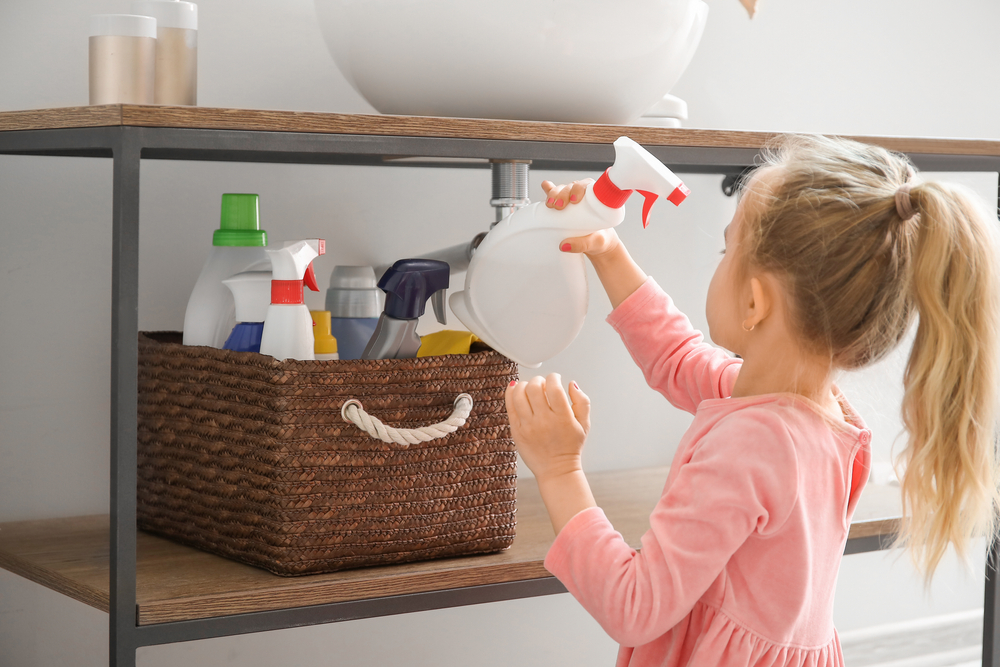As a parent, there’s nothing more important than making sure your child is safe. If you have a child with autism spectrum disorder (ASD), safety can be even more challenging.
Our team has compiled a list of tips and hazards that parents & specialists have commonly shared. We hope these tips for keeping your child safe at home and in the community can help your family reinforce safety practices and bring awareness to the safety challenges surrounding ASD.
4 Home Safety Tips
1. Child-Proofing. Use child-proofing products to keep dangerous items out of reach. This includes sharp items like knives and needle-like objects that could puncture skin or eyes. You may also want to consider installing window guards if your child has an interest in climbing out of windows or jumping off furniture.
2. Hazardous Chemicals & Medication. Ensure all medications and dangerous chemicals are placed in a secured area that only an adult may access. It is easy for a child to confuse a yellow bottle of cleaning liquid with juice, or a pill with a piece of candy. Also, make sure that you have the number of your local poison control center for emergency and non-emergency questions. They can be a great resource for at-home remedies to exposure to common chemicals.
3. Safe Space. Make sure that your home has a “safe” space that your child can access in instances where they feel afraid or overwhelmed. Depending on your child’s sensory needs, it is very beneficial to have a sensory-friendly place that your child could retreat to in times that they could become angry, sad, or overstimulated.
4. Keep Things Organized. Making sure toys, books, clothes and all other items have a designated area will help create order and structure in the environment. This could positively impact a child and reduce the frustration level of a child on the autism spectrum.
4 Hazards Outside of the Home & Helpful Tips
1. Wandering. Wandering is a common habit of children with autism. Just like other children, they are filled with wonder about the universe around them. In some instances, they can become entranced with a particular object or a place they see in the distance. When children with autism wander unsupervised, there are a number of safety concerns that arise. These safety concerns include getting lost, motor vehicle accidents, confusion & overstimulation. Teaching your child to ask for help from a trusted adult such as a police officer can be extremely beneficial as well. Another popular method is providing identification jewelry that can easily communicate to a helpful adult how to communicate with you and help your child.
2. Pica. It is common for children with autism to be curious about textures. Children who are hyposensitive may engage in sensory-seeking habits to get more sensory input from the environment. Pica is the term used to describe when a child eats or puts in their mouth something that is not considered food. In the safety of your home, you can prevent interactions with unsafe chemicals, sharp objects, or medications. While they wander in an uncontrolled environment, there is no way to predict or regulate what might pique their curiosity.
3. Drowning. A majority of children love to spend time in the water. Whether at a pool in the hot summer months or even just splashing in the tub, there is much to enjoy. Oftentimes, children with autism find it difficult to express fatigue or communicate having difficulty swimming. Unfortunately, drowning is a major concern for children with autism. As such, it is pertinent that parents provide their children with the right safety protocols around any body of water and even provide training aids to decrease the risk of drowning.
4. Communication Difficulties. Tying into some of the previously mentioned hazards, a common symptom of children with autism is difficulty communicating. Practicing emergency communication methods & having identification bracelets, backpack tags, or clothing packages can make communication with others simpler for your child. If your child has difficulty voicing their concerns, it may be easier for them to point to their bracelet or write down your name and phone number.
At Solstice Behavioral Health & Consulting, safety is our first priority. Solstice BHC has dedicated more than a decade of compassionate service to the children and families of Shelton, CT. We believe that early intervention can greatly improve your child’s skills, development, and relationships. If you and your family are searching for resources or information on how to support your child with Autism Spectrum Disorder, call our team of specialists and find out how Applied Behavioral Analysis has helped thousands of children overcome their autism challenges.


